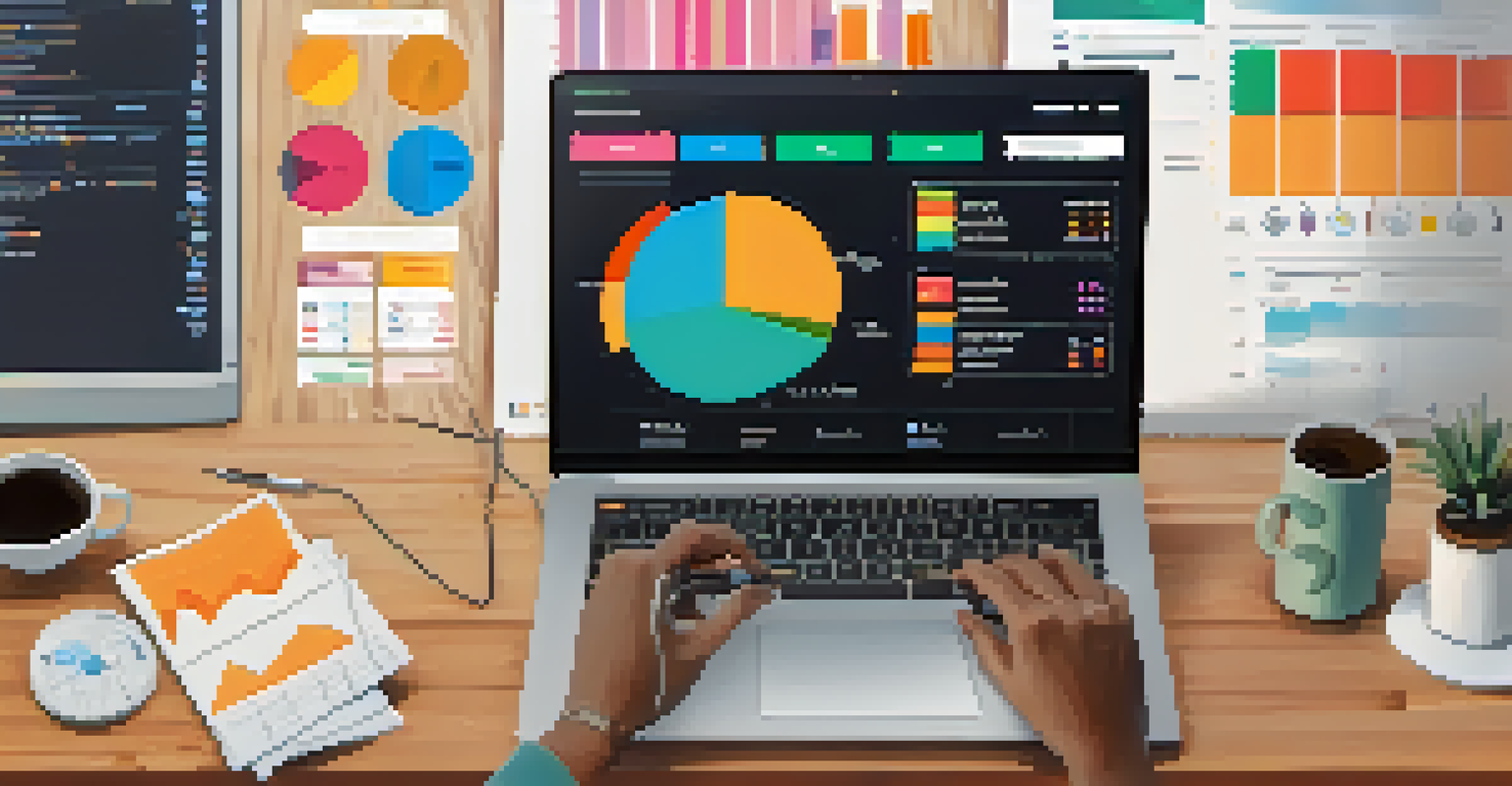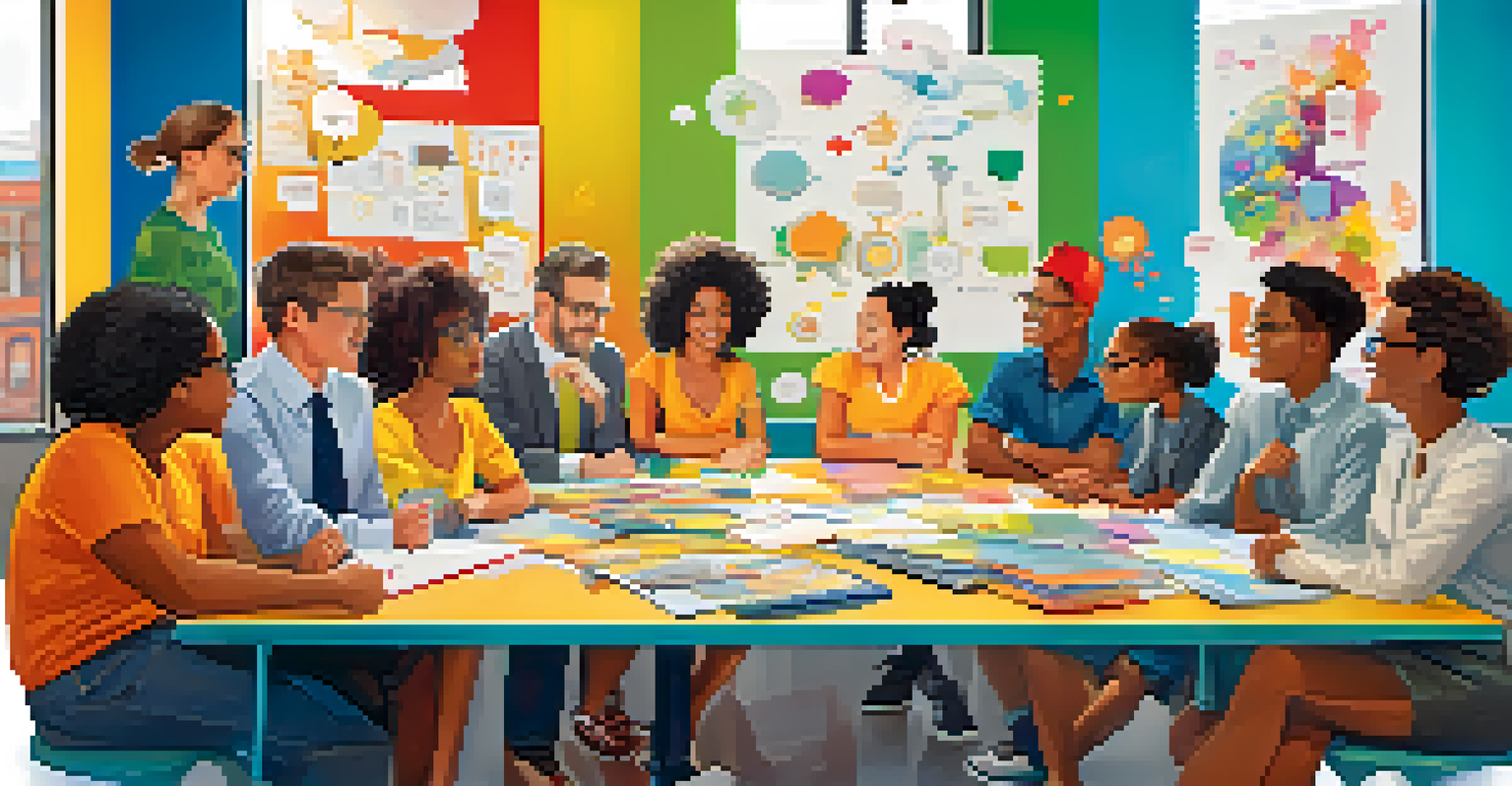Assessing Learning Needs for Effective Experience Design

Understanding the Importance of Learning Needs Assessment
Assessing learning needs is a crucial first step in experience design. It helps identify gaps between current knowledge and desired skills. By understanding these needs, designers can tailor experiences that resonate with learners.
The only thing worse than training your employees and having them leave is not training them and having them stay.
Imagine trying to build a house without knowing the needs of the residents. Similarly, without a proper assessment, you risk creating experiences that don’t effectively engage or educate your audience. This foundational step ensures that your efforts are focused and relevant.
Ultimately, a thorough learning needs assessment enhances the overall effectiveness of your design, leading to better outcomes for learners. It’s about creating a learning environment that truly supports growth.
Methods for Assessing Learning Needs
Various methods can be employed to assess learning needs, each offering unique insights. Surveys and questionnaires are popular tools that allow you to gather information directly from your target audience. These can reveal specific skills they wish to develop or knowledge they feel they lack.

Another effective approach is conducting interviews or focus groups. These discussions can uncover deeper insights and nuances that surveys might miss. Engaging directly with learners can foster a sense of ownership in the learning process, making them more invested in the eventual outcomes.
Importance of Learning Needs Assessment
Assessing learning needs is crucial for designing effective educational experiences that resonate with learners.
Lastly, analyzing existing performance data can provide valuable context. By examining trends and patterns in learner performance, you can pinpoint areas that require attention, ensuring your design efforts are both targeted and impactful.
Creating Learner Personas for Better Insights
Creating learner personas is a powerful technique for visualizing your audience's needs. These fictional characters represent different segments of your learners, encompassing their goals, challenges, and preferences. By developing personas, you can empathize with your audience and better understand their learning journeys.
An investment in knowledge pays the best interest.
For instance, if one persona represents a busy professional seeking quick skill updates, your design can focus on concise, digestible content. Conversely, if another persona is a novice looking for foundational knowledge, you might emphasize a more comprehensive approach. This tailored strategy enhances engagement and effectiveness.
Ultimately, learner personas help you bridge the gap between your content and your audience’s needs. They serve as reminders that learning should be personalized and relevant, making the design process more user-centered.
Aligning Learning Objectives with Business Goals
Aligning learning objectives with business goals is essential for the success of any learning experience. When the two are in sync, the learning initiatives become more relevant and impactful. This alignment ensures that the training not only meets learner needs but also contributes to the organization’s overall success.
Consider a company aiming to improve customer service; by tailoring learning objectives to enhance communication skills, you address both employee development and business performance. This strategic connection reinforces the value of learning initiatives within the organization.
Align Learning with Business Goals
Aligning learning objectives with business goals enhances relevance and engagement, driving organizational success.
Moreover, when employees see how their learning contributes to broader business goals, they are more likely to engage with the content. This sense of purpose can significantly boost motivation and retention, leading to a more effective learning experience.
Evaluating Current Skills and Knowledge Gaps
Evaluating current skills and knowledge gaps is a fundamental aspect of understanding learning needs. This evaluation helps identify what learners already know and what they need to learn. It provides a clear picture of the starting point for your design efforts.
Using tools such as skill assessments or pre-tests can effectively gauge existing knowledge levels. These tools highlight specific areas where learners excel and where they struggle, allowing for targeted interventions. This approach not only saves time but also ensures that resources are allocated efficiently.
By continuously evaluating skills and knowledge, you can adjust your learning initiatives as needed. This responsive strategy keeps the learning experience relevant, ensuring that it meets the evolving needs of your learners over time.
Incorporating Feedback for Continuous Improvement
Feedback is a vital component of any effective learning experience. It allows designers to understand how well their initiatives are meeting learners' needs. By actively seeking and incorporating feedback, you can make informed adjustments that enhance the overall effectiveness of your design.
For example, after a training session, gathering feedback through surveys or informal discussions can reveal what worked well and what didn’t. This insight can guide refinements in content, delivery methods, or even the learning environment. It’s a continuous cycle of improvement that ultimately benefits both learners and organizations.
Incorporate Feedback for Improvement
Gathering and incorporating feedback is essential for continuously refining learning initiatives to meet evolving needs.
Furthermore, creating a culture of feedback encourages learners to engage more deeply with the material. When they see their input valued and acted upon, they are more likely to invest in their own learning journey, driving better outcomes for everyone involved.
Leveraging Technology for Enhanced Learning Assessments
Technology plays a pivotal role in modern learning assessments, making the process more efficient and insightful. Online tools and platforms can facilitate surveys, assessments, and feedback collection seamlessly. This not only saves time but also reaches a broader audience quickly.
Additionally, learning management systems (LMS) can track learner progress and performance over time. This data-driven approach enables you to identify trends and patterns, offering a clearer understanding of learning needs. With these insights, you can refine your experience design more effectively.

Moreover, incorporating interactive technologies—like simulations or gamification—can enhance engagement and provide real-time assessments of skills. This innovative approach not only makes learning more enjoyable but also offers valuable data for continuous improvement.